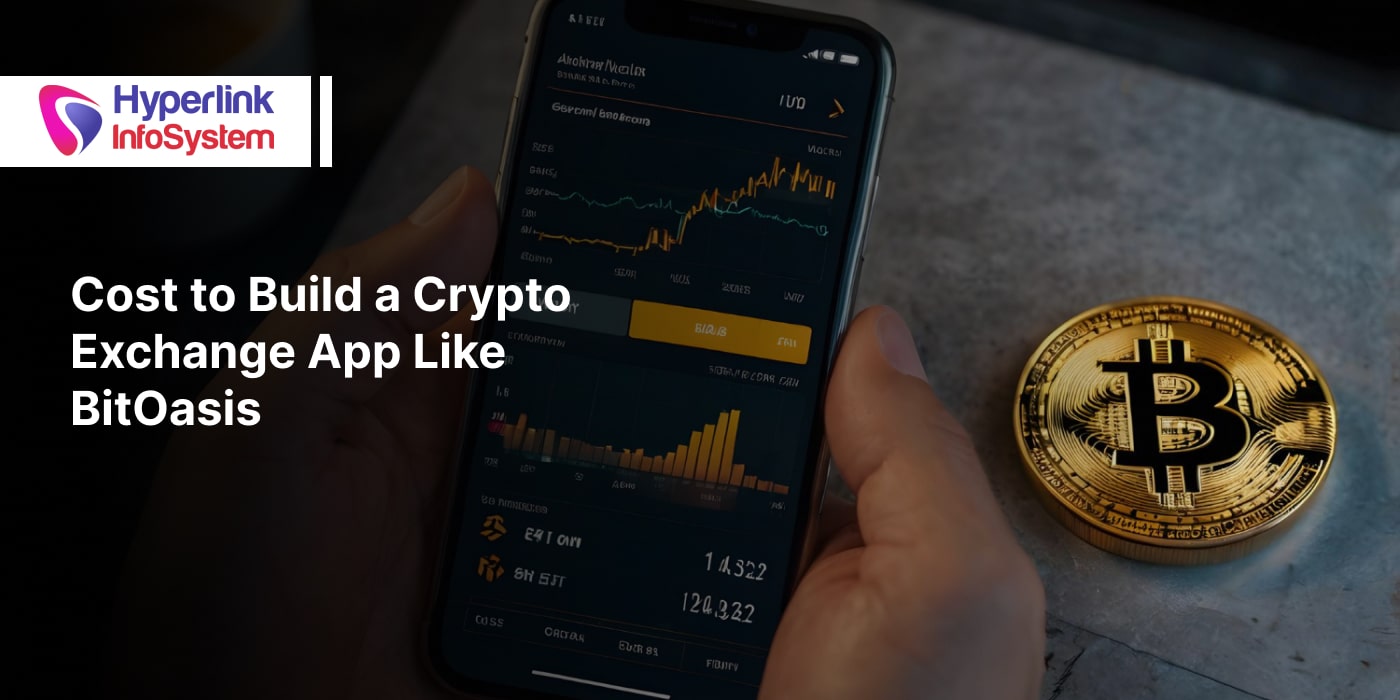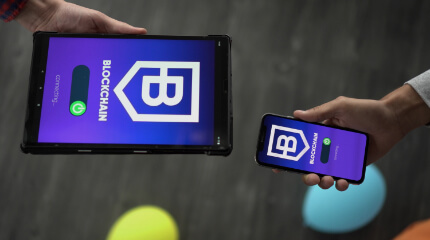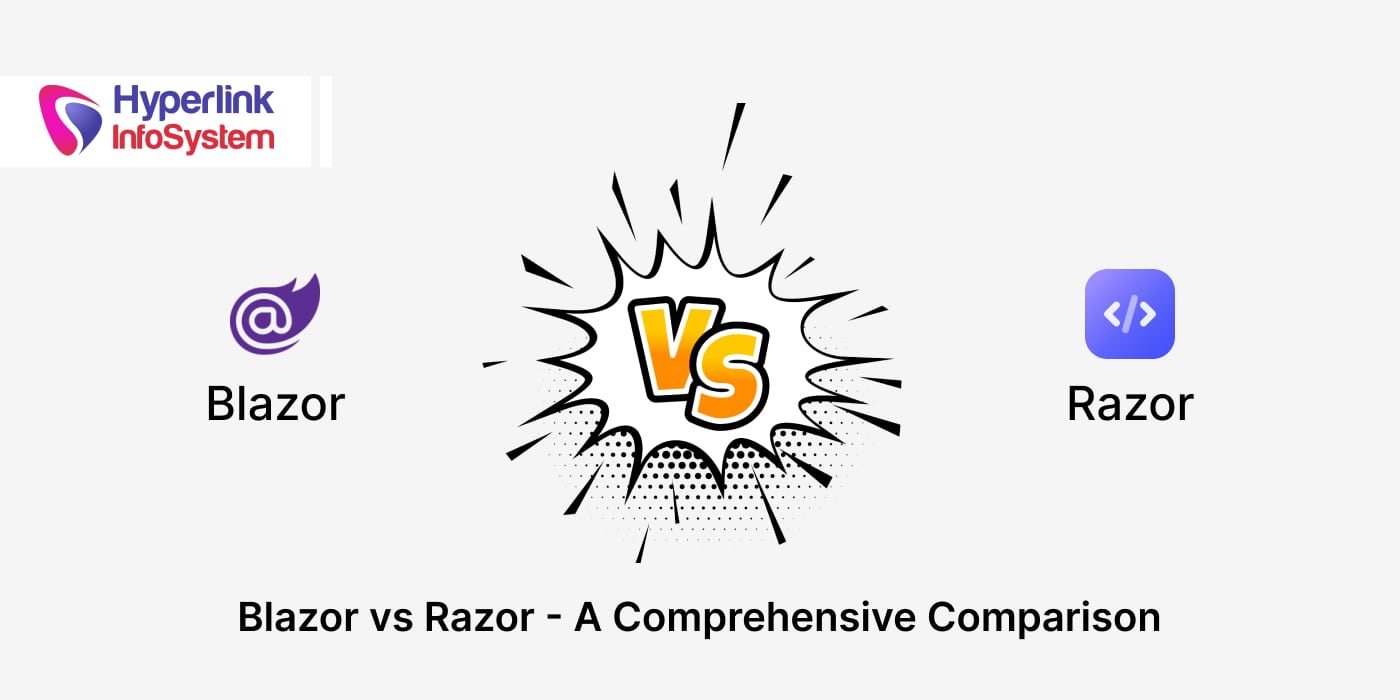How Much Does It Cost to Build a Crypto Exchange App Like BitOasis?
Aug 2025

Let’s face it, cryptocurrency isn’t just a buzzword anymore. It’s a full-blown shift in how the world looks at money, investment, and even freedom. From Bitcoin veterans to Gen-Z investors exploring altcoins, everyone wants in. And right at the heart of this movement? Trading platforms. Do not take them as just some random apps; they're an entire setup where users manage their digital currency and assets with just a few taps. The demand for high-performance crypto exchange apps is rising, especially in regions like the Middle East, where platforms like BitOasis have carved out their place amongst the competitors.
BitOasis didn’t just pop up overnight; it earned its place by delivering on three big promises: trust, compliance, and ease of use. And that’s exactly what any new crypto platform needs to get right. If you're exploring the cost to build a crypto exchange app like BitOasis, there's more to it than just lines of code. You need airtight security, a smooth user experience, and tech that can scale with your users. That’s where Hyperlink InfoSystem comes in.
As a leading blockchain development company, we'll give you a proper breakdown of how much it costs to develop a Crypto Exchange App like Bitoasis in this blog. Let's dive in.
Why Build a Crypto Exchange App Like BitOasis?
Let’s be real, crypto isn’t a trend anymore. It’s now part of how people think about money, especially in regions where traditional banking systems don’t offer much flexibility. We’ve seen this explode in countries across the Middle East, North Africa, Southeast Asia; people are skipping over legacy finance and going straight to digital. And that’s where apps like BitOasis found their sweet spot. It didn’t try to be everything to everyone. Instead, it focused on a market that needed a reliable, regulated, and simple way to get into crypto and nailed it.
Now, BitOasis isn’t the biggest global exchange, but that’s not the point. What it got right was timing, trust, and usability. BitOasis supports Ethereum, Binance Coin, and Dogecoin, which allows users to trade in their local currency and makes compliance feel less like a barrier and more like protection. So why build something similar? Because there’s room. People are still searching for platforms they can trust, especially in regions where crypto laws are just getting started. And if you’re thinking about the cost to develop a crypto exchange app like BitOasis, think beyond just development; you’re investing in access, scale, and community trust. That’s what gives apps staying power in this space.
Core Features of a Crypto Exchange App Like BitOasis
If you're planning to build a crypto trading app, don’t just think about how it looks, think about how it feels to use. The market's already full of exchanges, so the only way to stand out is by building something reliable, secure, and genuinely user-first. Here’s what needs to be on your must-have list:
- Secure User Onboarding with KYC/AML
Your users want quick access, but regulators want compliance. You’ll need a smart balance, easy sign-up with real identity checks, document uploads, and verification that doesn’t take days. Make it smooth, make it safe.
- Multi-Currency Wallet Integration
For a crypto app to be successful, there has to be multi-currency wallet integration, which means a built-in wallet that supports coins like Ethereum, Dogecoin, and some of the essentials. Users can send, receive, and hold crypto within the app only.
- Real-Time Trading Engine
This is where everything happens. Buy/sell orders should match in real time, with no lag. Even a few seconds of delay can cost users, and that’s how trust is lost.
- Live Charts & Analytics
Don’t make users switch to a different app just to check price trends. Give them built-in charts, trading volumes, and historical data that help them make decisions.
- Fiat & Crypto Payment Gateways
People want options. Some will pay with local currency, others with stablecoins. Your app should support both bank transfers, credit/debit cards, and crypto deposits, all in one place.
- Push Notifications & Alerts
With push notifications, users can set custom alerts for price drops, confirmations, or any other activity. Make sure that notifications are helpful to users, not annoying.
- Advanced Admin Dashboard
Your internal team needs visibility. A powerful admin panel should give you control over user verification, transaction monitoring, reports, and app settings. Think of it as the control room.
- Multi-Factor Authentication & Encryption
Security isn’t optional in crypto. Two-factor authentication, biometric logins, end-to-end encryption, and cold wallet storage should all be baked in from the beginning.
Factors Affecting the Cost to Develop a Crypto Exchange App Like BitOasis
Let’s clear one thing up first: there’s no flat rate when it comes to crypto exchange app development. We’ve worked with clients who’ve spent $40K for something lean, and others who crossed the $200K mark for a full-featured, regulation-ready beast. So, what really drives the cost? Here’s what you need to look at:
1) How Big (or Small) You Want to Go
This one’s obvious but often underestimated. A basic trading app that just lets users buy and sell a few popular coins? That’s a different ballgame from building something with 20+ coin support, staking options, real-time analytics, fiat onboarding, referral programs, and all the bells and whistles. Every extra feature adds design, development, and QA time. More screens. More edge cases. More code.
2) Where You Want Your App to Live
Planning to launch just a web app first? Or is this going live on iOS, Android, and tablet versions too? The number of platforms you build has a direct impact on cost. Web-only is simpler. Mobile requires more UI/UX work, different testing flows, and sometimes, separate codebases unless you’re going cross-platform with something like Flutter.
Still, cross-platform isn’t a silver bullet. It depends on what kind of experience you're after.
3) How Seriously You’re Taking Security & Compliance
You can’t cut corners here. Period. If your app’s going to hold money and personal data, your security setup needs to be airtight: end-to-end encryption, two-factor authentication, cold wallet integrations, that work. And if you’re operating in regulated markets? Add in KYC and AML processes, legal reviews, and audit readiness. This stuff takes time and talent. It’s non-negotiable if you want to stay live and trusted.
4) Design—Do You Want It Fast, or Do You Want It Right?
Good design is not a luxury anymore; if you want your app to be credible, it's a table stake. The smoother and better your app, the more people will use it. If you want to have a good conversion and retention ratio, then it is better to start with clean and intuitive designs and user app flow. Templates are faster and cheaper, sure. But they won’t give you a BitOasis-level experience. Custom UI work takes longer, but it shows in every tap.
5) APIs—A Double-Edged Sword
Need live crypto prices? You’ll probably plug into CoinMarketCap or a similar feed. Need fiat payments? You’re looking at third-party payment gateways. Want ID verification? You’ll need a KYC API like Jumio or ShuftiPro.
These tools are helpful, but they’re not magic. You still have to integrate them properly, deal with costs or subscriptions, and maintain them long-term. They save build time, but not always the budget.
6) Who’s Building It (And Where They’re Based)
Location still matters in 2025. Hiring a dev shop in California will cost you triple compared to a top blockchain development company in India. But more than geography, expertise is what you really pay for. A team that’s built trading apps before won’t just code; they’ll guide you through pitfalls you didn’t see coming.
You’re not just hiring developers. You’re hiring foresight.
7) The Work Doesn’t Stop After Launch
The journey doesn't end here. People usually forget about this stage; once the app is live, you still need to maintain the app functionality by resolving bugs, rolling out new updates, and working on the user feedback. This will cost you 15-20% of your initial crypto exchange app development costs every year.
It’s not a nice-to-have. It’s what keeps the engine running.
How Much Does It Actually Cost to Build a Crypto Exchange App Like BitOasis?
Let’s not sugarcoat it, building something like BitOasis isn’t cheap. It’s not some weekend side project. It’s a proper product, with layers of security, compliance, UX work, and real-time trading logic built into it. So yeah, you’re going to spend money.
But how much exactly? That depends on what you want for your app.
- If you just want a pretty basic crypto app with functionalities like login, wallet, and basic buy/sell, you can expect the cost to be around $35,000 to $60,000. It’s enough to get an MVP out, test the market, maybe support a few popular coins. But don’t expect too many bells and whistles.
- Now, if you’re planning to go a bit deeper, multi-coin wallets, live charts, KYC, fiat on-ramp, and a functional admin dashboard—then you’re probably in the $60,000 to $120,000 range. This is where most serious startups start. It’s solid. It works. It’s presentable.
- But if you want to play in the big leagues, something on the level of BitOasis, with full compliance, a real-time matching engine, security infrastructure, fiat/crypto integration, smart analytics, layered admin tools, etc., then you're likely staring at $120,000 to $250,000 or more.
And that’s just development. Hosting, audits, licenses, security reviews, and post-launch support? That’s extra.
You’ll find some app development companies promising to do it all for half the price. Just be careful. In crypto, cutting corners usually means cutting trust, and once that’s gone, users don’t come back.
How Long Does It Take to Build a Crypto Exchange App Like BitOasis?
Let’s talk timelines. While it’s easy to get excited about features and budgets, crypto exchange app development doesn’t happen overnight. There’s a real process behind it, and skipping steps just to launch faster usually means redoing things later (at twice the cost).
Here’s a rough breakdown of how the timeline usually plays out:
- Planning & Requirement Analysis—2 to 3 Weeks
This is where it starts. You define the scope, business model, core features, user types, and compliance needs. It’s part research, part documentation, part “what exactly are we building and why?” If this stage is rushed, expect chaos later.
- UI/UX Design—3 to 4 Weeks
Once you finalize the requirements, bring in the design team. They work on wireframes, user flows, prototypes, and more. This isn't about making the app pretty; it's about making it clean and eye-catching to attract users to use the app.
- Development—3 to 6 Months
This is where the real heavy lifting happens. Wallet integration, real-time trading engine, dashboards, KYC modules, admin controls—the whole thing comes to life here. The timeline depends a lot on complexity. A lean MVP might take 3 months. A full BitOasis-style platform? Closer to 6, or even more.
- Testing & Deployment—3 to 4 Weeks
No one wants to launch a buggy crypto app. This phase is all about breaking things before your users do: security audits, functionality tests, load testing, and deployment to live servers. If something’s going to fail, better here than after launch.
- Post-Launch Support—Ongoing
The day your app goes live isn’t the finish line. It’s just Day 1. Updates, new features, bug fixes, performance optimizations, this part never really ends. Budget for it. Plan for it.
Now, here’s the thing: working with a top blockchain development company can make a huge difference here. Teams that have built these platforms before already know the pitfalls. They won't have to experiment with different techs and tools to figure out what's right and what's not. That experience alone can save you a lot of money and time both.
Tech Stack and Tools You’ll Actually Need to Build a Crypto Exchange App
When you’re building a crypto exchange app, choosing the right tech stack isn’t just about picking popular tools—it’s about building something stable, scalable, and secure from day one. You don’t need flashy buzzwords. You need what works.
Here’s a full breakdown:
1) Frontend (What the user sees and interacts with)
You need an interface that feels smooth, loads fast, and doesn’t frustrate users. And let’s be honest—no one sticks around for a clunky UI.
- React – Our go-to for building clean, high-performing dashboards and admin panels. It’s fast, modular, and easy to iterate with.
- Angular – A bit heavier, but solid for large-scale enterprise apps where structure and type safety matter.
- Flutter – A great pick if you’re aiming for mobile-first. One codebase, native performance, smooth animations—works well for Android and iOS out of the gate.
What to consider: If your users are mobile-heavy, Flutter gives you speed and flexibility without doubling your dev time.
2) Backend (The engine under the hood)
This is where everything actually happens—order matching, wallet logic, API calls, and user management. You need something stable, fast, and easy to scale.
- Node.js – Handles real-time stuff like a champ. It’s non-blocking, great for price feeds, trades, and quick user actions. Lightweight and well-supported.
- Python – Strong choice for security, smart contract integration, or analytics-heavy features.
- Laravel (PHP) – Easier for teams that prefer structured MVC setups and quick development cycles.
Honestly, Node.js + Python is a pretty common combo in crypto platforms today.
3) Blockchain Integrations
Your app won’t survive without solid blockchain support. BitOasis-style platforms usually support multiple chains:
- Ethereum – Still the go-to chain for smart contracts and token transfers.
- Binance Smart Chain (BSC) – Cheaper gas fees, fast transactions.
- Solana – Great for high-speed trading apps.
- Polygon – Works well with Ethereum-based apps, but more scalable.
A good cryptocurrency exchange development company will help you choose based on your use case, not just what’s trending.
4) Wallet Integration
You’ll need both internal wallets and external wallet connectivity.
- MetaMask API – Essential if you're letting users connect personal wallets.
- Trust Wallet API – Another common option, especially in mobile-first environments.
Plus, you’ll need your own custodial wallet solution for holding assets safely.
5) Cloud Hosting
Go with providers that offer scalability, security, and strong global support.
- AWS – The go-to choice for most serious fintech platforms.
- Google Cloud – Solid for data-heavy apps.
- Microsoft Azure – Reliable, secure, and enterprise-friendly.
If uptime and security are priorities (they should be), don’t cheap out here.
6) Security Tools
You’re dealing with real money. The tech stack must lock down every possible angle.
- SSL encryption
- Biometric login for mobile apps
- DDoS protection and firewalls
- Role-based admin access
- End-to-end encryption for sensitive user data
Security isn’t a one-time feature. It needs to be baked into every layer of development. If you’re working with a trusted cryptocurrency wallet development partner, they’ll likely have a security-first workflow already in place.
Similar Use Cases: What Else Can You Build with the Same Core?
Once you’ve built the foundation for a crypto exchange app—wallets, trading logic, real-time data, and compliance layers, you’re already halfway to building several other fintech products. Here are three clear paths that use similar mechanics and tech:
1) A Stock Trading App (Think Robinhood)
At the core, stock trading apps and crypto apps aren’t that different. Both need a real-time engine, order matching, wallet equivalents, and KYC flows. So if you’re already investing in this infrastructure, it’s not a huge leap to build a stock-focused product next.
Whether you’re planning something as lean as Robinhood or with deeper analytics and charting, the main thing that changes is what you're plugging into—brokerage APIs instead of blockchain nodes.
If you’re asking about the cost to develop a stock trading app, it's in the same ballpark as a mid-range crypto platform, just with a different compliance landscape.
2) A Dogecoin-Specific App
It sounds niche, but it’s got legs. Dogecoin still has a highly active community, and building a lightweight app dedicated to it can work well if you know your audience.
You don’t need to launch a full-blown exchange. Just focus on quick buy/sell features, a secure wallet, real-time price tracking, and maybe a community or meme feature if you’re playing into that space. From a development point of view, it’s a straightforward build and fast to get off the ground.
3) A Binance-Like Multi-Asset Exchange
This one’s for those who want to go big.
If BitOasis is regional, Binance is global, and the complexity shows. You’ll need multiple coin support, advanced order types, scalable architecture, and strong liquidity integrations. Throw in mobile apps, cold wallet support, margin trading, staking, and user tiers… it becomes a serious product.
But if you’re already thinking at this scale, the tech stack you’re building today can serve as the blueprint. You just need the right dev team and roadmap.
This isn’t about one app. It’s about building the foundation to create many and doing it right the first time, so you don’t have to start over every time an opportunity comes along.
Conclusion
Building something like BitOasis isn’t a weekend project, but it also doesn’t need to take years. If you’ve been thinking about launching your own crypto exchange, now’s the time to act. The market’s still growing, and the window to establish a solid, trusted platform is wide open. You already have the idea, what you need now is a roadmap, a team that’s done it before, and a realistic cost breakdown to move forward. Let’s get that started.
Reach out, and we’ll walk you through what it takes to bring your crypto platform to life.
Frequently Asked Questions
The cost usually starts around $60,000 for a basic version and can go well over $200,000 for a full-featured platform. It really depends on the features, security layers, and how scalable you want it to be.
On average, around 4 to 6 months. A simple app can be ready faster, but if you're building something complex with KYC, wallet support, and advanced trading tools, give it more time to get it right.
Not necessarily. Many startups launch with just Bitcoin and Ethereum, then add more based on user demand. You can always scale up once the core system is stable.
Because we’ve done it before. We understand the tech, the compliance, and the pressure to build something secure and reliable. And we don’t just build apps—we help you launch a business.
Latest Blogs

Is BlockChain Technology Worth The H ...
Unfolds The Revolutionary & Versatility Of Blockchain Technology ...


IoT Technology - A Future In Making ...
Everything You Need To Know About IoT Technology ...

Feel Free to Contact Us!
We would be happy to hear from you, please fill in the form below or mail us your requirements on info@hyperlinkinfosystem.com
Hyperlink InfoSystem Bring Transformation For Global Businesses
Starting from listening to your business problems to delivering accurate solutions; we make sure to follow industry-specific standards and combine them with our technical knowledge, development expertise, and extensive research.
4500+
Apps Developed
1200+
Developers
2200+
Websites Designed
140+
Games Developed
120+
AI & IoT Solutions
2700+
Happy Clients
120+
Salesforce Solutions

40+
Data Science

















